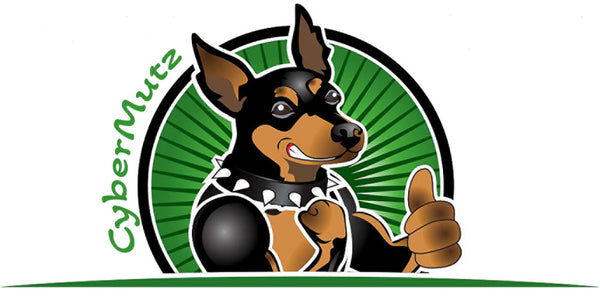
Min Pins
Share
Overview:
• Origin: The Miniature Pinscher was developed in Germany in the early 20th century. They were bred as ratters, helping to control vermin populations on farms. Their ancestors include the Dachshund and the Italian Greyhound.
• Size: Min Pins typically weigh between 8 to 12 pounds and stand about 10 to 12.5 inches tall at the shoulder.
• Lifespan: 12-16 years.
Appearance:
• Coat: They have a short, smooth, and shiny coat that is easy to maintain. Common colors include black, chocolate, and red, often with tan markings.
• Body: Min Pins are compact and muscular, with a square build and a long neck. They have a distinctive high-stepping gait, which is part of their unique charm.
• Head: Their heads are wedge-shaped with large, expressive eyes and erect ears that can be cropped or left natural.
Personality and Temperament:
• Energetic and Playful: Min Pins are known for their boundless energy and playful nature. They love to play and require regular exercise to keep them happy and healthy.
• Intelligent and Alert: They are quick learners and enjoy mental challenges. Their alertness makes them excellent watchdogs, as they are always on the lookout for anything unusual.
• Confident and Spirited: Min Pins have a bold and confident demeanor. They may not be aware of their small size and can sometimes act more like a larger dog.
• Affectionate and Loyal: They form strong bonds with their families and can be affectionate, often seeking out attention and companionship.
Health and Care:
• Exercise Needs: Min Pins are active dogs that require regular exercise. Daily walks, playtime, and interactive games are essential to keep them physically and mentally stimulated.
• Common Health Issues:
• Patellar Luxation: A condition where the kneecap slips out of place, leading to mobility issues.
• Hip Dysplasia: A genetic condition that can lead to arthritis and discomfort.
• Heart Issues: Min Pins may be prone to certain heart conditions, such as mitral valve disease.
• Grooming: Their short coat requires minimal grooming, but regular brushing helps reduce shedding. Routine dental care and nail trimming are also important.
Interesting Facts:
• “King of Toys”: Min Pins are often referred to as the “King of Toys” due to their regal appearance and confident attitude.
• Acrobatic: They are known for their agility and love to jump and play, often surprising their owners with their athletic abilities.
Temperament with Kids and Other Pets:
Min Pins can be good with children if raised with them, but supervision is important due to their small size and energetic nature. They can get along with other pets, but early socialization is essential to prevent any territorial behavior.
Training and Socialization:
Early training and socialization are crucial for Min Pins. They respond well to positive reinforcement techniques and enjoy learning new tricks and commands. Regular socialization helps them become well-adjusted adults.
Exercise and Activities:
Min Pins thrive on physical and mental activities. They enjoy interactive play, such as fetch, agility training, and puzzle toys to keep their minds engaged.
Summary:
CyberMutz.com (Dog-Themed Apparel & Accessories)
“CyberMutz.com – Explore a unique collection of dog-themed apparel, accessories, and gifts for pet lovers. Shop stylish, high-quality designs featuring your favorite dog breeds!” Category Page Descriptions: Dog Breed T-Shirts: “Show off your love for dogs with our exclusive breed-themed T-shirts. From German Shepherds to Chihuahuas, find high-quality, comfortable tees celebrating your favorite pup!” Dog Breed Pet Tank Tops: “Keep your furry friend stylish and comfortable with our dog breed-themed pet tank tops. Perfect for small and large dogs, these unique designs are a must-have!” Funny Dog-Themed Apparel: “Love dogs and humor? Our funny dog-themed apparel blends style with witty canine-inspired designs. Shop now for T-shirts, hoodies, and more!” Personalized Dog Merchandise: “Customize your dog lover’s gear with our personalized pet-themed apparel and accessories. Create a one-of-a-kind look for yourself or a perfect gift for a fellow dog enthusiast!”
CyberPussyKatz.com (Cat-Themed Apparel & Accessories)
“CyberPussyKatz.com – Celebrate your love for cats with our premium collection of feline-inspired apparel and accessories. Purr-fect designs for every cat lover!” Category Page Descriptions: Cat Breed T-Shirts: “Showcase your favorite feline friend with our stylish cat breed-themed T-shirts. From Maine Coons to Siamese, find the perfect tee for cat lovers!” Funny Cat-Themed Apparel: “Express your quirky side with our funny cat-themed T-shirts, hoodies, and more. Pawsome designs for those who love cats and humor!” Personalized Cat Merchandise: “Make it personal with custom cat-themed apparel and accessories. Create a unique gift or a special piece just for you!”
CyberMunkiez.com (Monkey-Themed Apparel & Accessories)
“CyberMunkiez.com – A fun collection of monkey-inspired apparel and accessories. Perfect for primate lovers who enjoy bold, playful, and unique designs!” Category Page Descriptions: Monkey-Themed T-Shirts: “Go bananas over our monkey-themed T-shirts! Whether you love capuchins, chimps, or gorillas, our designs bring out your wild side.” Funny Primate Apparel: “Add a touch of humor to your wardrobe with our hilarious monkey and ape-inspired apparel. Great for animal lovers and jungle enthusiasts!” Custom Monkey Merchandise: “Make it yours! Personalize your favorite monkey designs on T-shirts, hoodies, and more for a one-of-a-kind look.”
